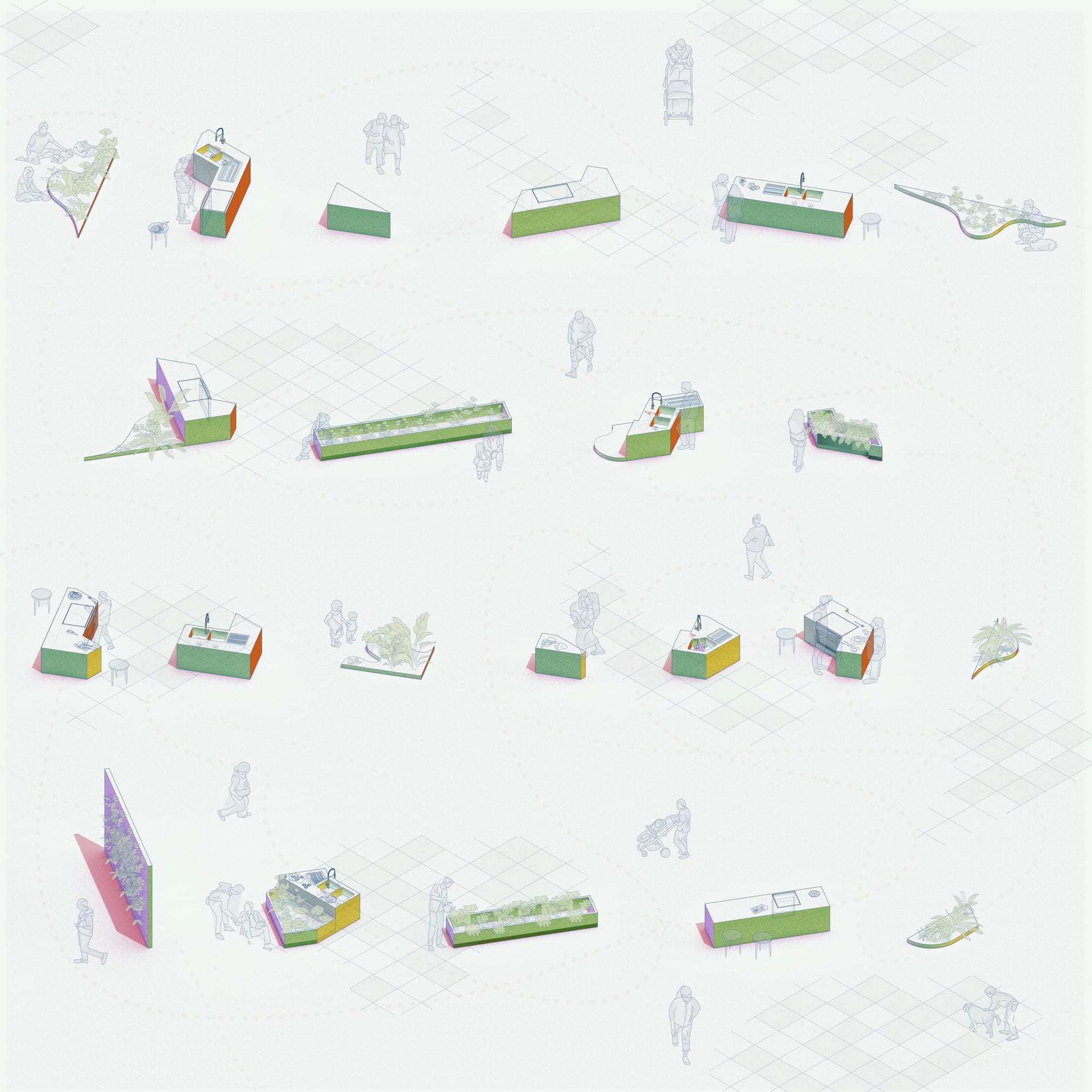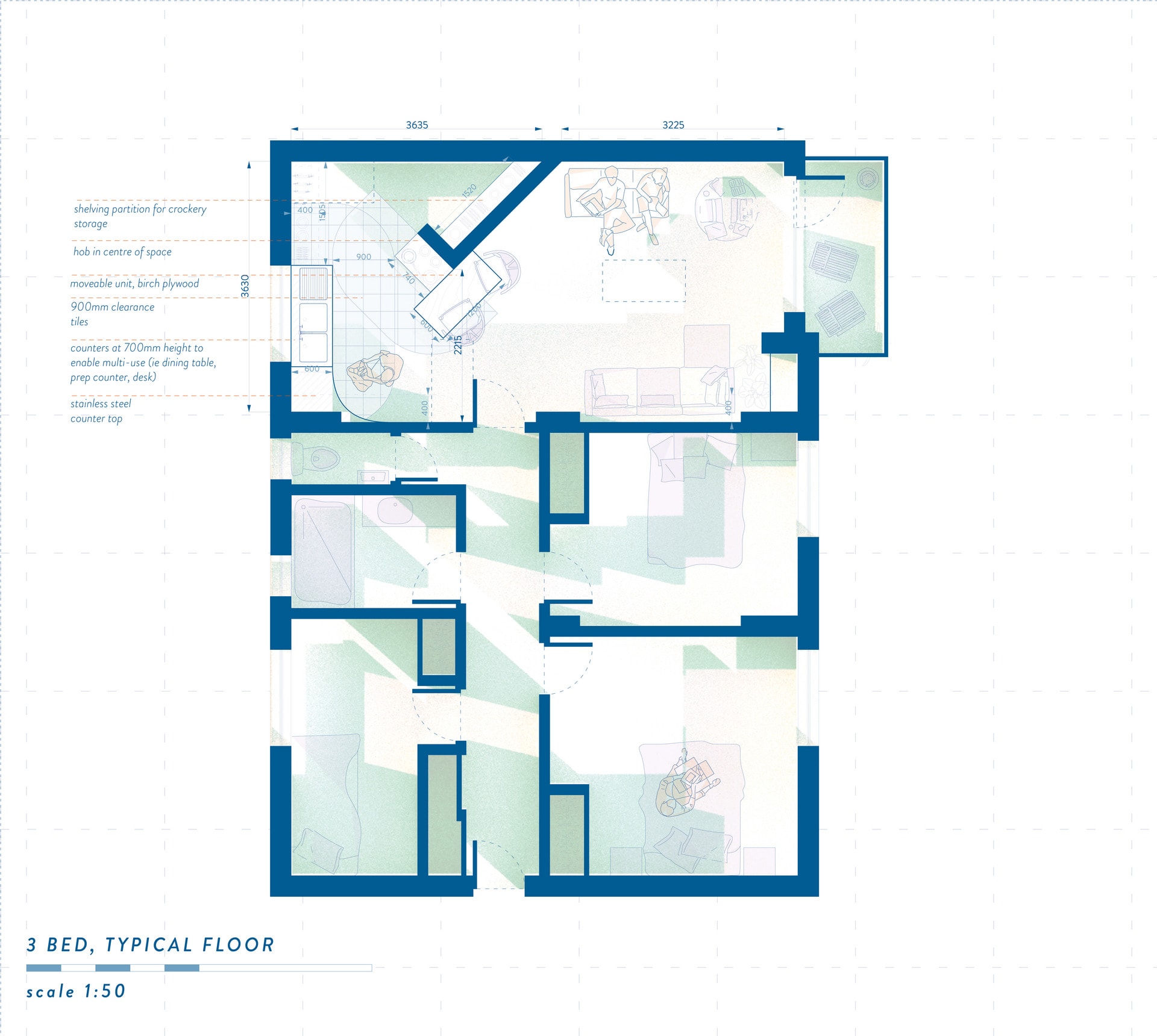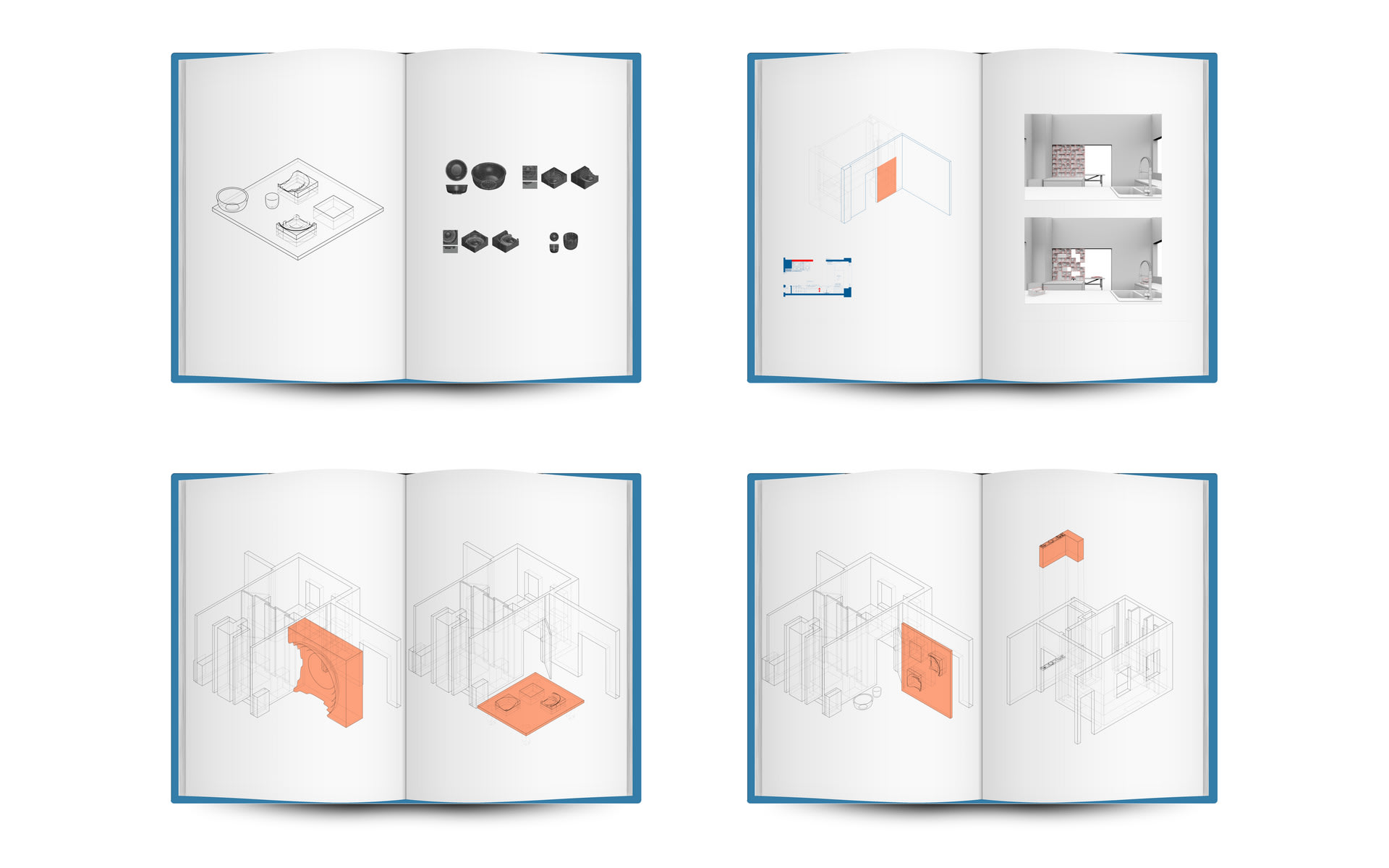Originally from Newcastle upon Tyne, Nanci is a research-led designer based in London, focused on questioning normate practices and power structures, and spanning gender roles, disability, and language. In turn, she creates possibilities that dissect the policed, prescriptive boundaries of traditional architecture and design.
This year, in ADS3, Nanci has utilised the kitchen as a site to engage with power and gender roles in relation to domestic objects and spaces, gendered craft, and the role of historical precedent within these. This resulted in a proposal for a network of community kitchens within a council block in London.
Separately, through her dissertation, she examined the insidious, monolithic language of institutional care systems, working through autotheory to explore the performative aspect of language, and its ability to provide care and violence in moments and spaces.
Last year, as part of ADS9, her proposal questioned the current individuality of allotment plots – with their assigned ownership, limited scale, and pre-determined usage - by creating shared spaces for multiple uses. Through the sequential development of a material transformation of the site, it proposed an architecture that merged into the landscape.
Nanci previously completed her undergraduate at the Bartlett School of Architecture. Her final project proposed an architecture that re-aligned circadian rhythms through the careful application of light and colour. After graduating from her BSc, she worked for an architectural practice in London for 2 years, where she continued to work part time whilst studying at the RCA.






















